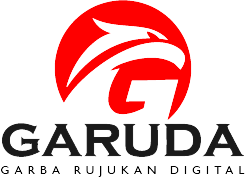EVALUASI PROSES PERUBAHAN DENGAN 8 STEP KOTTER (Studi kasus PT PELINDO 1 Tbk)
DOI:
https://doi.org/10.34127/jrlab.v12i1.845Abstract
The purpose of this research is to see how an organization can increase value by changing the structure, culture and technology. Changes in functional structure can help provide an environment in which people are motivated to act. The fundamental reason organizations need change is because something relevant to the organization has changed, or is about to change. Because of that, the organization had no other choice but to change as well. This change occurred because of encouragement from internal and external companies. The decreased performance of its employees which leads to unsatisfactory service is often a trigger factor for internal organizations to make changes and the external factor is increasingly fierce business competition. This study uses the eight principle methodology in creating change. Change is something that is very difficult to avoid, because change is driven by internal and external organizational forces. Although the environment of an organization is continuously changing, it is necessary to assess changes for the life cycle of the organization. This is related and highly dependent on the form of organization. Change, according to Lewin, occurs because of the emergence of pressures on organizations, individuals or groups. The model invented by Kurt Lewin is an analysis of the power field or the internal and external environment of the organization. Business process automation is becoming an effective way for companies to force change that is irresistible. If the rules are written, even though they have been mutually agreed upon, employees can still work around them. But technology can be coercive effectively and can eventually lead to cultural change. The automation process at Pelindo I was successful because first, it was able to overcome the feeling of awkwardness in the paternalistic culture which is very strong as well as the culture of "kinship" which is very thick in the body of SOEs. Second, being able to motivate employees to always look their best because everything is in the corridor of professionalism. Third, because it is combined with changes in performance management. Performance management is simply productivity. Then the change process that was carried out for the first time in 2004-2014 which was not conducive was caused by the not forming a team that was strong enough to direct the process (building a guiding coalition). And this is what creates resistance also from employees. Then it was not created at the beginning of creating the right vision, but changes have been implemented, meaning that subordinate employees are invited to change without being accompanied by communication of a vision.
Keywords: Evaluation, Organization, Step Kotter
References
Annual Report Pelindo 1 tahun 2015-2016
Ismail Nawawi, 2014 Manajemen Perubahan PT Ghalia Indonesia, Bogor
Kotter, 1999. What Leaders Really Do Kepemimpinan dan Perubahan. Penerbit Erlangga Jakarta.
Kotter, 1996. Leading Change Harvard Business School Press New York
SWA Edisi Desember 2017
Yasin M, 2014 Organisasi Manajemen Leadership Studi Transformasi BUMNPT Mizan Publika, Jakarta
Downloads
Published
Issue
Section
License
Jurnal Lentera Bisnis disebarluaskan di bawah Lisensi Creative Commons Atribusi-BerbagiSerupa 4.0 Internasional.
Berdasarkan ciptaan pada https://plj.ac.id/ojs/index.php/jrlab




